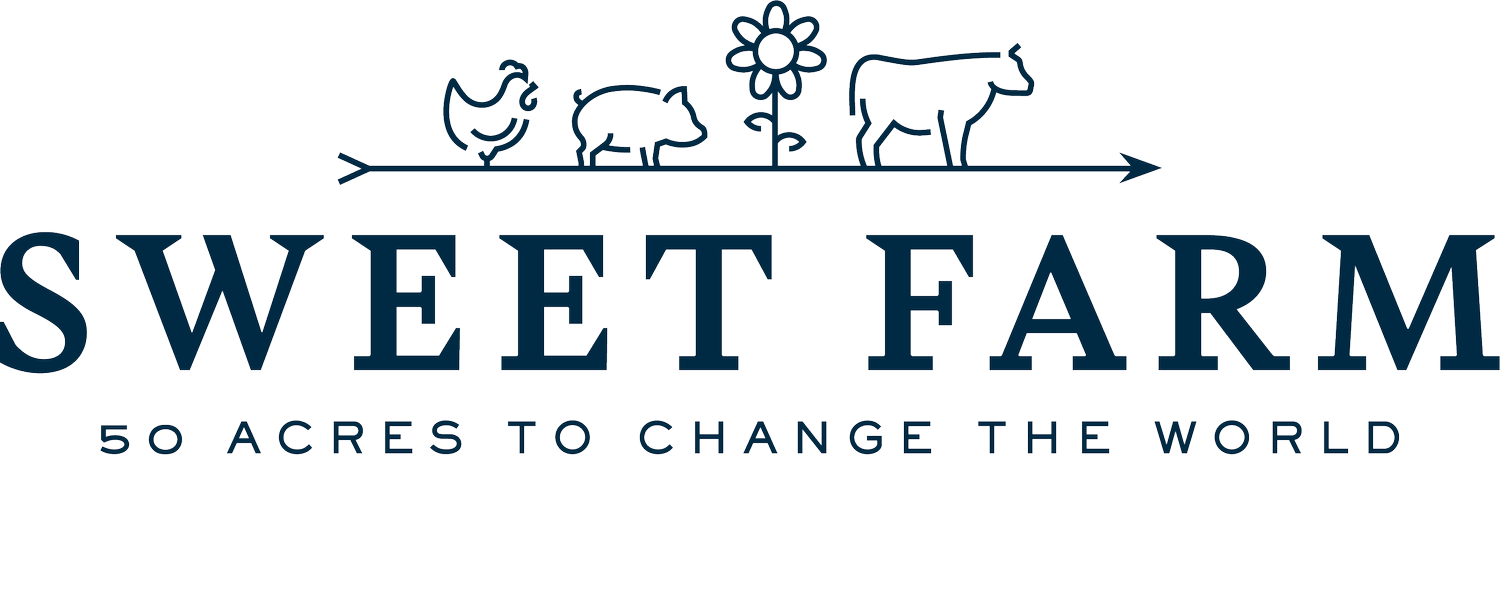March in the Garden: Cool Weather Gardening
Sweet Farm was originally founded in 2016, beginning it's life as a farm animal sanctuary. But it became clear almost immediately that our food and climate systems are so deeply intertwined that it was impossible to tell just one part of the story. To really create change, we realized it was essential to include other important pieces of the puzzle, and by 2017, the Regenerative Agriculture program was born. For those of you who have visited the farm in person, you've seen our fields of flowers and veggies, grown in a way that gives back to the soil and the planet. Each month, we'll be sharing monthly updates with our supporters, near and far, on what we're growing, how we're growing it, and what you can do at your own homes to create positive change through gardening.
Don't Wait Until May or June to Garden!
When most people thing of vegetable gardening, they think of tomatoes. And since tomatoes can't go in the ground until the danger of frost has passed, so many people don't start their gardens until May or even June. We are here to tell you you are missing out!
Here in New York, we start our vegetable gardens in March. You heard that right: March. How is that possible, you ask? Because so many delicious veggies we love to grow actually do great when the soil is still cool and don't mind a frost here or there. As you learned in last month's newsletter, lots of seeds can be started indoors in February or even January in the case of things like onions.
While some of the things we are getting the ground in March have been started indoors from seeds, there are plenty that actually prefer to be directly sown in the ground, or that grow so quickly/have seeds that are so small you don't need or want to start them inside individually.
Here's what we are planting in the ground outdoors in March
Veggies: potatoes, cauliflower (transplanting from seeds we started indoors), cabbage (transplanting), kale (transplanting), turnips (direct sown), beets (direct sown), spinach (direct sown), lettuces (direct sown), carrots (direct sown), leeks (transplants), onions (sets)
Flowers: sweet peas (transplants and directly sown), snapdragons (transplants and directly sown), stock (transplants and directly sown)
Herbs: cilantro (direct sown), rosemary (transplants), dill (direct sown)
Red Cabbage Seedling
Brassicas are the Best
Brassica is a genus of plants in the mustard family (Brassicaceae) whose members are often referred to as cruciferous vegetables or cole crops. The Brassica family includes cabbages, broccoli, cauliflower, romanesco, kohlrabi, brussels sprouts, turnips, horseradish, wasabi, bok choy, kale, collards, mustard greens, radishes, watercress, rutabaga, and arugula. Amazing, right? Brassicas love the temperate weather, making them a spring and fall crop here in the northeast. Many of them often struggle in the heat of summer, and then bounce back and thrive as soon as temperatures start to drop. We like to provide our brassicas a little shade in the hotter months and they show us their appreciation by growing beautifully and deliciously!
Did you know? One cup of uncooked broccoli contains 91% of your daily recommended vitamin C. Brassicas are high in antioxidants and have even been shown to reduce cancer risk. They contain high levels of vitamin C, A, E, K, as well as folate, calcium, iron, potassium, and phosphorus. They are high in dietary fiber, low in calories, and are so much more delicious when you grow them yourself.
French Breakfast Radishes thrive in cool soil
We're Looking For Seedfluencers
We mentioned last month that we are getting ready to start sharing our favorite Sweet Farm grown seeds with you. In the next few months, we'll begin selling seed packets of our favorite heirloom varieties, grown with love at Sweet Farm and shared with our community, with all proceeds going to support our nonprofit work.
But it's not just our seeds we want to share! Are you an at home gardener, with a favorite variety of heirloom seeds? If you've grown and saved your own seeds, and have extra to share then please reach out. We'd love to find your extra seeds a happy home in our community, and share your seed saving work with the world as a Sweet Farm Seedfluencer!
How Does Gardening Help You and the Planet?
When you grow your own fruits and vegetables, you eat more of that food group than you ordinarily would. And getting your kids involved in growing is an incredibly effective way to get kids to eat more fruits and veggies. Homegrown food is also significantly higher in nutrition than food in the stores.
And growing your own food doesn't just reduce your carbon footprint. Outdoor gardening also promotes biodiversity, supports pollinators, houses wildlife, all of which create a more resilient ecosystem. While both indoor and outdoor gardening clean the air!




